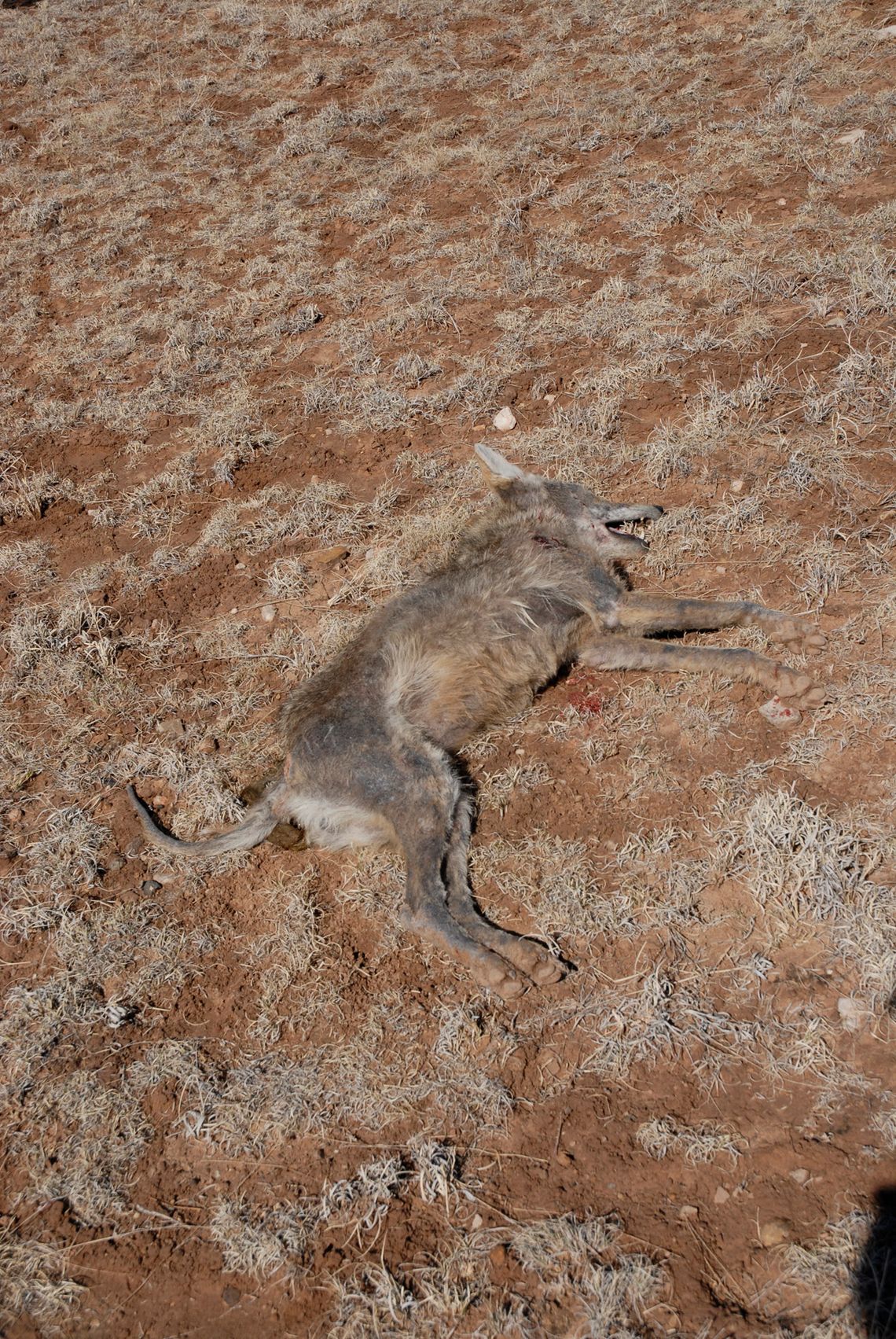Have you ever shot a chupacabra?
Hunting in New Mexico a while back with Gary Roberson, owner of Burnham Brothers Game Calls, I had one in my sights.
Shortly after Gary activated his battery-operated coyote call that morning, what I thought was a coyote appeared forty yards away in the snow. I picked it up in the scope. Instead of my own rifle, Gary had me using a new rifle Ruger made for him — a left-handed model. I’m right-handed.
Knowing better, I moved my head slightly to find the safety switch. The presumed coyote bolted away almost as quickly as if I had hollered “SCAT!” I should have shot.
I was still kicking myself when I heard a rifle shot from another hunter not far away.
When Gary picked me up, I told him what happened. He assured me I’d get another chance.
We drove over to pick up the other hunters. About eighty yards away from one lay a dead critter. As we walked up, someone said “Is that a coyote? It looks funny.”
It did. Coyotes in winter wear a healthy fur coat. And usually have a bushy tail. This one looked smaller, not as furry as usual, and had a hairless tail like a possum or a big rat. We quickly decided it had to be a chupacabra! All agreed.
Chupacabra in Spanish means “goat sucker.” During the 1980s, livestock was found dead in Puerto Rico and Latin America that had its blood sucked out. Vampires were suspected. Art and folk fables have claimed it to be a large black bat with red eyes, and sucks blood. Other tales say it’s more of a little green man. Hollywood helped keep the lore alive through a couple of monster movies.
On Puerto Rico, fifteen cows, three goats, two sheep, and a pig were found dead, having been emptied of blood. Imaginations and rumors of unexplained livestock deaths ran rampant. The frenzy spread through Latin America into Mexico and then crossed the Rio Grande into South Texas.
The colorful name has been adopted by unrelated businesses and even appears on T-shirts. I proudly sport one for the “Chupacabra Racing Team” sponsored by Gulf States Toyota.
Chupacabras are now in third place on the list of most famous creatures in the world — just below Bigfoot and the Loch Ness Monster. No one has photographed one, yet … unless my attached image can be authenticated. (It IS copyrighted, just in case!)
A couple of respected Ph.D. friends, Dr. Scott Henke, at Caesar Kleberg Wildlife Research Institute at A&M-Kingsville, Dr, John Tomecek, with Texas A&M AgriLife Extension, and Dr. Terry Hensley at the Texas A&M Veterinary Medical Diagnostic Laboratory (whom I haven’t met), have authored a paper stating that tissue samples examined were either racoons or domestic dogs.
Without apologies for advancing Chupacabra lore, I’m reminded of a line uttered by the newspaper editor in the movie, “The Man Who Shot Liberty Valence: When legend becomes fact, print the legend.”
.jpg)


